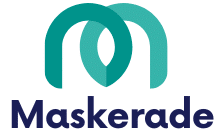Can AI-Enhanced Self-Learning Platforms Tailor Education for Students with Dyslexia?

In our ever-evolving world, the importance of inclusive education cannot be overemphasized. It provides the foundation for a diverse, accepting, and compassionate society. We must ensure every child, regardless of personal circumstances or learning differences, has access to quality education. One such group that needs extra attention in this regard is students with dyslexia. New advances in technology may have the potential to support such students and educators in personalizing their education experience. Artificial Intelligence (AI), in particular, has been making waves in the educational sector. The question, therefore, is: Can AI-enhanced self-learning platforms tailor education for students with dyslexia? This discussion will explore this exciting possibility, focusing on the terms learning, education, students and dyslexia.
AI-Powered Learning Tools: An Overview
AI technology has revolutionized the world in various ways, one of which is its integration into education. AI-powered learning tools are essentially software applications or platforms that use advanced algorithms to adapt to learners’ needs, ultimately providing a personalized learning experience. Such technologies can analyze data about a student’s performance and learning habits, enabling the system to suggest areas for improvement and provide customized support. This type of technology has shown promise for students with special educational needs, such as dyslexia.
A voir aussi : How Are Conversational AI Bots Transforming UK’s Online Customer Support?
Teachers are increasingly using AI tools in the classroom to support students. AI can help differentiate instruction, provide instant feedback, and offer a more inclusive and personalized learning experience. The potential of AI for education is immense, and it holds transformative potential for students with dyslexia.
Understanding Dyslexia: An Education Challenge
Before delving deeper into how AI could potentially benefit students with dyslexia, it’s important to understand what dyslexia is. In simple terms, dyslexia is a specific learning difficulty that primarily affects the skills involved in accurate and fluent word reading and spelling. It’s characterized by difficulties with phonological processing, which is the ability to see or hear a word, break it down into its individual sounds, and then blend these sounds together to read or spell the word.
A voir aussi : What Are the Ethical Implications of Predictive Policing Powered by AI in the UK?
It’s estimated that around 5-10% of the global population has dyslexia, making it one of the most common learning difficulties. But despite its prevalence, many educational systems struggle to provide adequate support for students with dyslexia. Traditional teaching methods often fail these students, as they typically rely on rote learning and memorization, both of which can be challenging for those with dyslexia. This is where AI technologies can become game-changers.
AI-Enhanced Self-Learning Platforms: A Potential Solution
AI-enhanced self-learning platforms are at the forefront of personalized education. These tools can analyze a student’s learning style, strengths, and weaknesses, and adapt the content accordingly. For students with dyslexia, who often struggle with the ‘one-size-fits-all’ approach of traditional education, AI technology can provide the tailored learning experience they need.
Digital platforms that use AI can offer a variety of features tailored to support dyslexic learners. For instance, text-to-speech and speech-to-text tools can assist students who have difficulty with reading and writing. AI systems can also offer personalized learning pathways, breaking down complex concepts into manageable chunks and presenting them in an engaging, interactive manner.
While integrating AI into the classroom may initially sound daunting for educators, many AI tools are designed to be user-friendly and accessible. Teachers can use these platforms to monitor student progress, identify areas of difficulty, and provide targeted support.
The Role of Data in Personalized Education for Dyslexic Students
Data is a crucial component of AI-enhanced self-learning platforms. By collecting and analyzing data about how students learn, these platforms can provide personalized educational experiences. For instance, these tools can track a student’s progress over time, identify patterns, and suggest strategies to address any challenges. This can be especially valuable for dyslexic students, as it allows for the development of an individualized learning plan that considers their unique learning style and needs.
For instance, if a dyslexic student consistently struggles with a specific type of reading task, the platform can suggest alternative approaches or resources to help them improve. Similarly, if a student excels in a certain area, the platform can provide more advanced materials to challenge them and further their learning. This kind of individualized learning approach is often more effective than traditional methods for dyslexic students, as it caters directly to their unique learning needs and preferences.
Balancing Technology and Human Support
While AI technology has the potential to significantly improve education for students with dyslexia, it’s crucial to remember that it’s a tool, not a complete solution. Technology should be used to complement human support, not replace it. Dyslexic students still require the guidance of educators who understand their needs and can provide emotional and motivational support.
Even with the most advanced AI tools, human interaction remains a crucial part of the learning process. Educators play a key role in creating an inclusive learning environment and fostering a positive attitude towards learning. They can also provide the encouragement and motivation that AI cannot. After all, education is not just about imparting knowledge; it’s also about nurturing learners to become confident, independent thinkers.
AI technology can indeed provide an exciting avenue for personalized education for students with dyslexia. However, careful thought must be put into its implementation to ensure that it’s used to enhance the learning experience, not replace the vital human element of education. Each student is unique, and while AI can help cater to their individual needs, the importance of human support in their learning journey cannot be overstated.
Real-Time Feedback and Personalized Learning Experiences
Artificial Intelligence (AI) provides an innovative approach to special education, especially for students with dyslexia. One of the key features that make AI beneficial is its ability to provide real-time feedback. As students interact with AI-enhanced self-learning platforms, the system continually analyzes their responses and performance. This immediate feedback can help students identify their mistakes and correct them promptly, a feature that can be particularly beneficial for dyslexic students who may struggle with traditional, less responsive teaching methods.
AI-powered platforms can also offer personalized learning experiences. Rather than following a standardized curriculum, these platforms can adapt to the unique learning styles and needs of each student. This is particularly relevant for students with dyslexia, who often need a more tailored approach to education. For instance, using machine learning algorithms, the AI system can identify that a student struggles with certain phonetic combinations and can adjust the learning materials to focus on these areas. It can also present information in various formats – text, audio, or visual – depending on what suits the student the best.
These adaptive learning environments created by AI, along with providing real-time feedback, create a personalized and inclusive education experience that could radically transform the way students with dyslexia engage with their education.
The Integration of AI in Educational Institutions
While the potential benefits of AI-enhanced self-learning platforms are clear, integrating them into educational institutions can pose a challenge. Firstly, there may be logistical issues, such as lack of adequate infrastructure or resources. Secondly, teachers and students may need training to effectively use these platforms. Teachers’ roles would also need to evolve to match the changes brought about by these assistive technologies.
However, it is important to remember that these challenges are not insurmountable. Many AI platforms are designed to be user-friendly and can be easily incorporated into existing learning environments. Additionally, ongoing support and training can help teachers transition into this new role of being a facilitator who utilizes AI tools to support individual learning paths.
It is also crucial to establish proper data privacy measures when using AI in education. As these platforms rely on collecting and analyzing data about students’ learning habits, ensuring this data is securely stored and used responsibly is paramount.
Conclusion: The Future of Education for Students with Dyslexia
AI-enhanced self-learning platforms are trailblazing a new path in special education, particularly for students with dyslexia. By offering personalized learning experiences and providing real-time feedback, these platforms have the potential to greatly enhance the learning environment for these students.
However, the integration of AI into educational institutions requires careful planning and implementation. Teachers and students need to be trained to effectively utilize these assistive technologies, and measures need to be in place to ensure data privacy.
That said, the potential benefits of AI in education are immense. As we continue to explore and refine this technology, we can create more inclusive, adaptive, and effective learning environments. This could revolutionize the way we approach education for students with dyslexia, ushering in a future where every student, regardless of their learning style or disability, has the opportunity to thrive. AI is not the complete solution, but it is an important tool that can be used in conjunction with human support to create an inclusive education system that caters to all.
